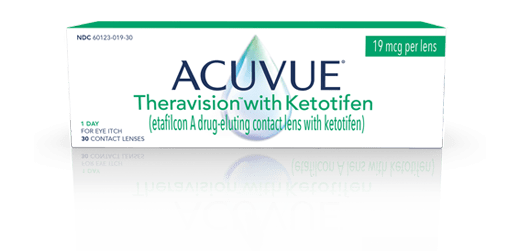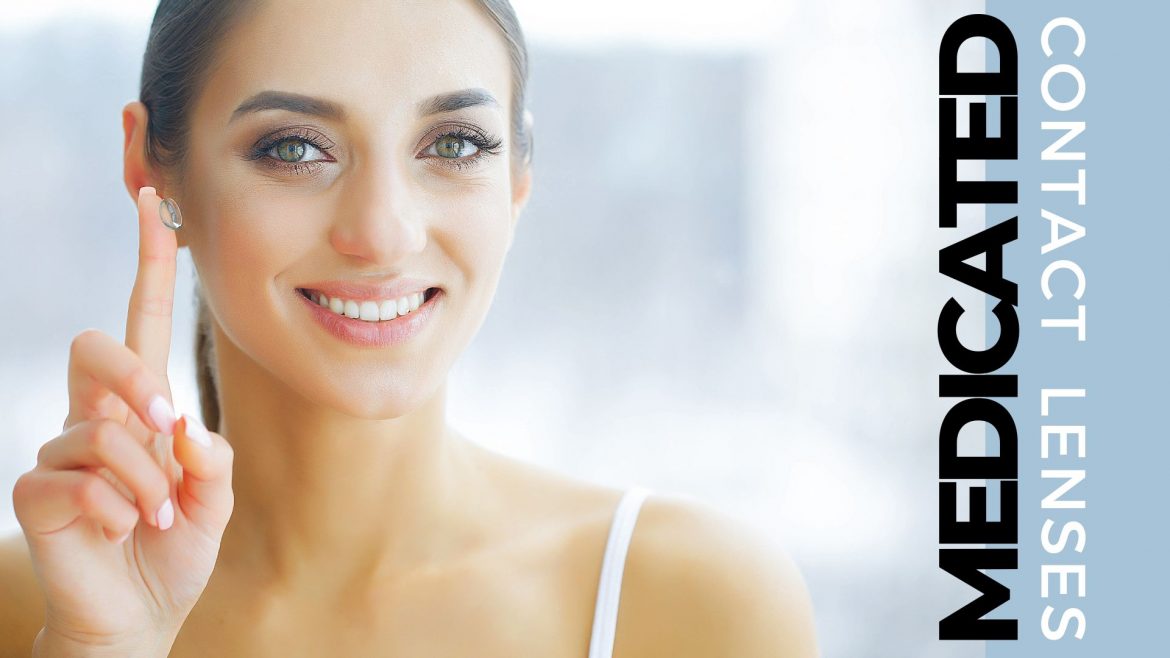![]()
Besides correcting vision, contact lenses may be potential treatment devices to relieve eye pain, help the cornea to heal from injury, protect and hydrate the surface of the cornea from dry eye disease, and deliver medications to the eye.
Many ocular conditions like allergic conjunctivitis, dry eye, and glaucoma are treated using eye drops. It is estimated that 95% of the active ingredient in the medication may be lost through tear drainage. Technological advancements have made it possible to use soft contact lenses to deliver a continuous release of medication over a duration of time to treat ocular conditions and disease.
The ability of the soft contact lens to absorb and release a drug is based on the contact lens material. Their potential as a treatment depends on the water content, the thickness of the lens, the molecular weight of the drug, the drug concentration, and the time it remains within the lens.
Topical eye drops can be an inconvenient burden for patients. Delivering medication by way of a contact lens has many benefits and offers a glimpse into the future of treatment.
Let’s look at the potential benefits of using contact lenses to deliver medication to your eyes.
Potential benefits of medicated contact lenses
- Greater bioavailability
Typically only 5%-10% of the medication is available to the eye’s surface because it is quickly washed out by blinks and tears. Most of the medication is lost through nasal drainage. More of the medication remains underneath the lens for treatment.
- Less frequent dosing
Most eye medications require drops to be put in the eye several times per day. More medication remains in the eye with a contact lens, so less dosing is needed.
- No preservatives needed
Medication is incorporated into the lens so preservatives are not needed. Preservatives can sometimes cause eye irritation and discomfort.
- Easy compliance
Since medication exists in the lens, patients do not have to worry about adding drops to their daily routine.
- Consistent dosing
Inserting eye drops into the eye can be difficult for some individuals which may lead to wasting medication or inconsistent dosing. The contact lens profile provides consistent dosing over time.
- Reduced expense
The patient saves money on refills and co-pays as less medication is wasted rolling down your cheek.
- Use of a potentially lower dose
By using soft contact lenses, it’s possible to use a lower dose of medication, but have the same therapeutic effect on the eye condition.
Types of medicated contact lenses
Allergic conjunctivitis
Acuvue ® Theravision™ with Ketotifen (ATK) by Johnson & Johnson Vision will be the first daily contact lens combined with an antihistamine. The daily disposable contact lens is the 1-DAY ACUVUE® MOIST with Ketotifen and is indicated for the prevention of itchy eyes due to allergic conjunctivitis.

Studies confirmed that wearing the lenses resulted in a reduction in itchy allergy eyes as quickly as 3 minutes after lens insertion and lasting up to 12 hours. They will be able to provide vision correction for patients without red eyes, who are eligible for contact lens wear, and who do not have more than 1.00 D of astigmatism.
The lens was first launched in Canada in 2021 and was approved by the Pharmaceutical and Medical Devices Agency (PMDA) in Japan in March 2021. A single lens contains only 0.019 mg of ketotifen fumarate, which is less than or comparable to the amount in the over-the-counter eye drop. It is hypothesized that ATK is effective because it releases the ketotifen fumarate gradually and because the drug accumulates in the tears beneath the contact lens, so the ocular effects last longer than the instillation of the same eye drop.
Patients have not reported burning but do report improvements in itching and ocular redness associated with seasonal allergies.
Johnson & Johnson Vision Care announced that the FDA had approved Acuvue® Theravision™ with Ketotifenin in March 2022 and the lens is expected to be available in 2023. According to contact lens representatives, the lens is expected to be available in boxes of 30.
What can we expect in the future?
Glaucoma
Medications commonly used to treat glaucoma can be transferred to a hydrogel contact lens and then extracted from the contact lens per study data. Though the data was collected from a limited number of patients, a contact lens/drug delivery system may be a feasible means of treating glaucoma by lowering the pressure within the eye (IOP). Common glaucoma medications timolol maleate and brimonidine tartrate were used to determine medication uptake and maintained IOP levels for up to 7 hours. IOP levels were equivalent to if the eye drop was used.
Dry eye disease
Cyclosporine, also called Restasis, is a medication used to improve the appearance of eyes with moderate to severe dry eye disease. Commercially available silicone hydrogel lenses have demonstrated the ability to release the drug upwards of two weeks. The contact lens had a therapeutic effect on the symptoms of dry eye; the ocular signs of dry eye were improved as observed by an eye doctor.
Anti-inflammatories
Dexamethasone sodium phosphate is a corticosteroid used to treat eye inflammation from dry eye disease, uveitis, and other ocular inflammatory conditions. Steroids are often administered in the eye hourly and often have poor compliance. The Dex-Lens delivered the drug for 7 days in vivo (rabbit model) without any adverse events in the rabbit’s eyes. Dex-Lenses were just as effective as using the dexamethasone eye drops hourly.
Antibiotics
Soft contact lenses have been used as a delivery system using two types of antibiotics: polymyxin B and ciprofloxacin. Model silicone hydrogel contact lens materials were manufactured to mimic commercial contact lens properties, including light transmission and surface wettability. A research study demonstrated this model contact lens was just as effective at treating bacterial colonies as corneas treated with antibiotic eye drops with many potential uses including post-surgery, eye infections, or corneal abrasions.
Corneal infection by herpes simplex viruses (HSVs) is a common yet silent cause of blindness in both the pediatric and adult populations, especially in immunocompromised individuals. Herpes simplex is treated with a topical anti-viral to prevent scarring. Valacyclovir has demonstrated potential for incorporation into a contact lens and to therapeutically treat the corneal effects of Herpes simplex in the eye.
The future use of soft contact lenses for drug delivery is quite exciting!
It seems probable the future of ocular disease conditions will be treated with a contact lens versus an eye drop. If you need medication to treat an eye condition, there are so many unique benefits to using a soft contact lens. Contact lens wearers can improve their vision and their eye health at the same time.

